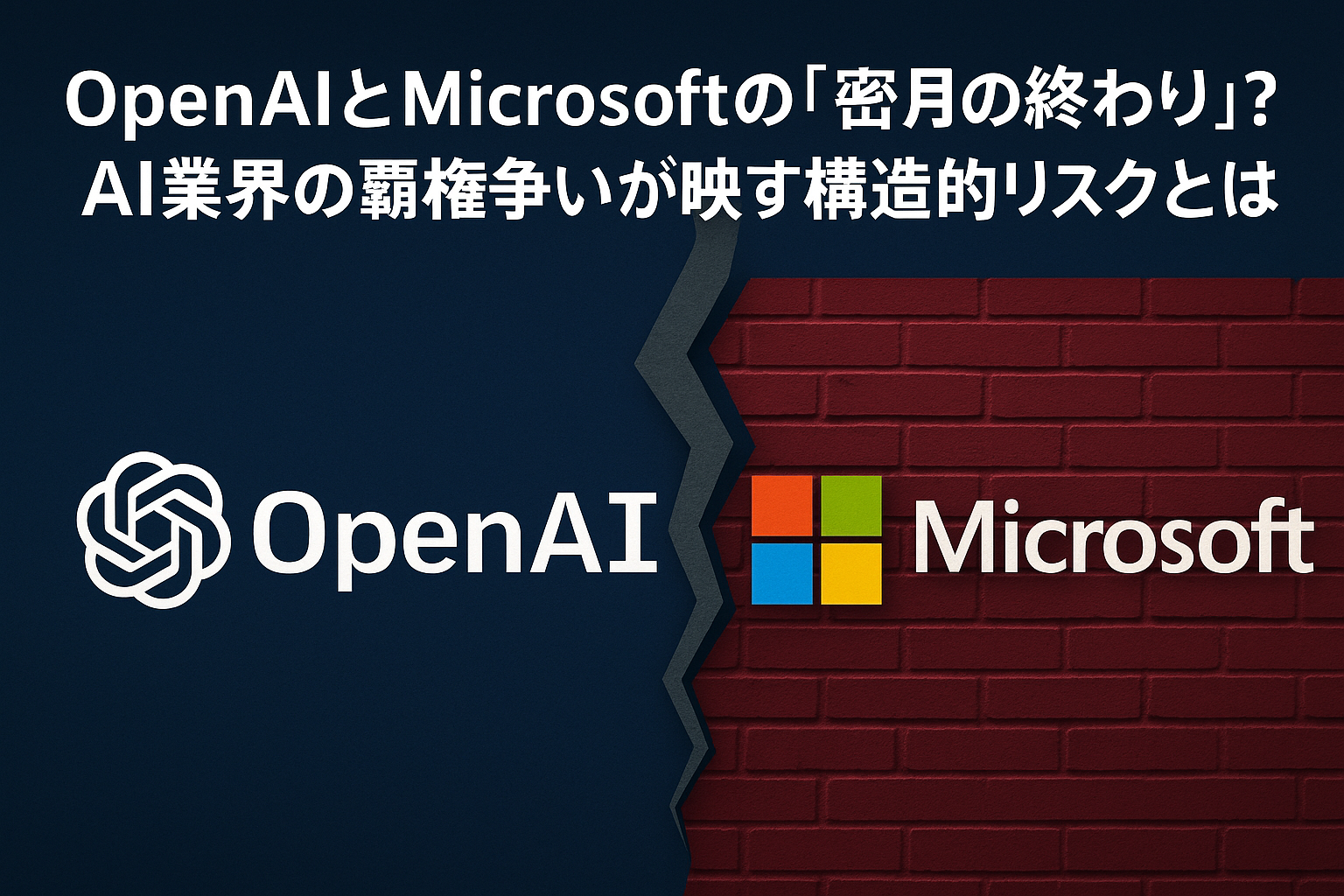In June 2025, tensions emerged that shook the AI industry. A serious rift has developed between OpenAI and Microsoft—its largest investor and a close partner in both cloud and technological infrastructure. This conflict goes beyond a mere corporate dispute; it raises fundamental questions about AI governance and the structural integrity of the industry.
Background: A Shifting Relationship
The partnership between OpenAI and Microsoft began with an initial investment in 2019 and deepened rapidly after 2023 through exclusive agreements involving Azure cloud services and large language models (LLMs). However, as both companies began offering AI products directly to users, the collaborative framework gradually gave way to increasing competition.
A particular point of concern is the requirement that OpenAI obtain Microsoft’s approval to transition into a for-profit corporation. While this may appear to be a natural condition for an investor, it has become a significant constraint for OpenAI and is reportedly a major factor behind the current deadlock.
Key Issue: Intellectual Property and Exclusive Access
One focal point of the dispute is OpenAI’s planned acquisition of a coding-focused startup called Windsurf. According to reports, a core issue is whether Microsoft will have access to the intellectual property resulting from the acquisition.
Under the current agreement, Microsoft is entitled to broad access to OpenAI’s intellectual property. However, whether this right extends to newly acquired entities like Windsurf remains ambiguous. Such contractual structures not only inhibit freedom of technological innovation but also highlight the risk of investors excessively constraining the strategic decisions of startups.
The “Nuclear Option”: Filing a Complaint with the FTC
It has been reported that OpenAI executives are considering the “nuclear option”—filing a complaint with the U.S. Federal Trade Commission (FTC) over Microsoft’s alleged anti-competitive behavior. This would be a highly consequential move, potentially resulting in irreparable damage to their relationship.
At the same time, OpenAI is contractually obligated—based on its 2024 funding round—to complete its transition into a for-profit company by the end of 2026. Without Microsoft’s approval, this may prove impossible. In essence, OpenAI is racing against time under intense legal and financial pressure.
A New Challenge for AI Governance
This conflict exposes two critical issues at the heart of AI development: a power imbalance among central players and a lack of transparency in governance. When investors wield excessive influence over technical direction and intellectual property, there is a risk that technological innovation becomes subject to economic and political bargaining.
In the case of a general-purpose technology like AI, the outsized influence of specific corporations can unduly shape the trajectory of progress, raising serious concerns about industry-wide transparency and integrity.
The dispute between OpenAI and Microsoft is more than just a power struggle between corporations. It offers important insights into the future of AI development and its governance structures. This case compels us to confront fundamental questions such as: Who controls AI? And for whose benefit is it ultimately used?

